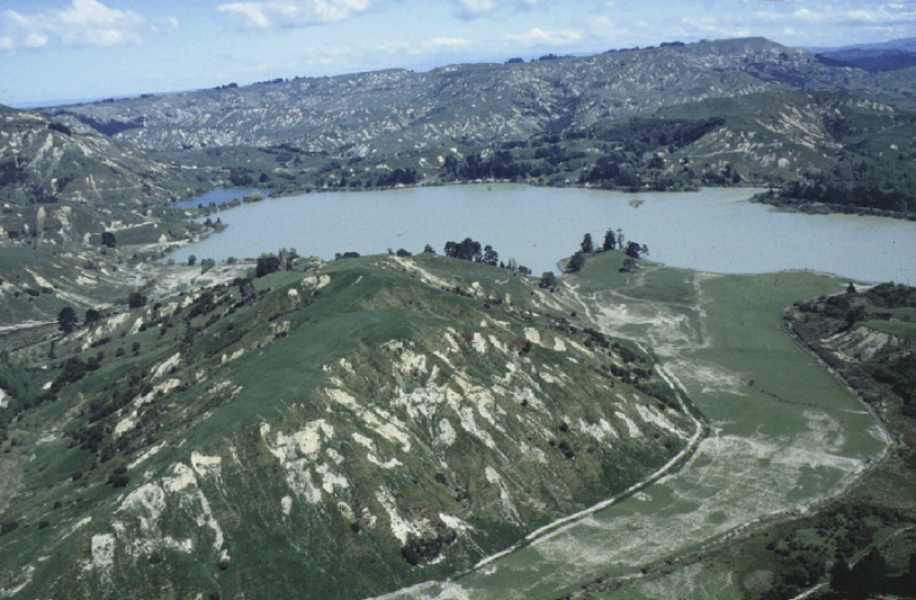An international team of scientists has analysed 7000 years’ worth of lake-bottom mud from central Hawke’s Bay to work out how often the region might expect earthquakes of at least moderate (ground shaking intensity MMI 7) strength, such as the recent 2008 quake.
The study, led by Dr Basil Gomez from the University of Hawai’i, suggests such quakes might occur, on average, every 57 years. This is in broad agreement with a previous estimate derived from the National Seismic Hazard Model for New Zealand, which placed the interval at 39 years.
“The time intervals between recent large earthquakes in Hawke’s Bay can be approximated using historical and instrumental records kept for the past century,” says Dr Alan Orpin, a NIWA Marine Geologist and member of the international team. “However, the calculations that help to protect society are dependent on the sparse histories of smaller earthquake ground motions, which can be very limited or poorly preserved in environmental records.
“Lake sediments can function as natural seismographs that can build a continuous library through time of earthquakes. They are a largely unexplored repository of region-scale information about earthquake ground motions.”
The team sought an environment in which sediments – including deposits created by ground shaking – have accumulated without any breaks. Lake Tutira, located approximately 25km north of Napier, proved ideal.
Cores extracted from the lake bed revealed a clear record of sediment disturbance over a period of 7000 years. A challenge for the team was to distinguish deposit layers caused by rainstorms from those triggered by seismic activity.
“We were able to do this by correlating known storm and seismic events from historical times with the physical and chemical properties of corresponding sediment layers,” Dr Orpin explains. “We found distinct differences, which gave us a template to trace seismic events back through history.”
The methodologies and results of the team’s research are the subjects of an article soon to be published in the prestigious journal Geology produced by the Geological Society of America.
“The seismic record we have extracted from Lake Tutira ranks among the most detailed earthquake chronologies available worldwide,” says Dr Orpin. “Lakes exist in just about all active tectonic settings around the world, which means that our methodology could be applied elsewhere, significantly improving region-scale knowledge of the recurrence of earthquakes with the potential to cause damage to buildings and infrastructure.”


